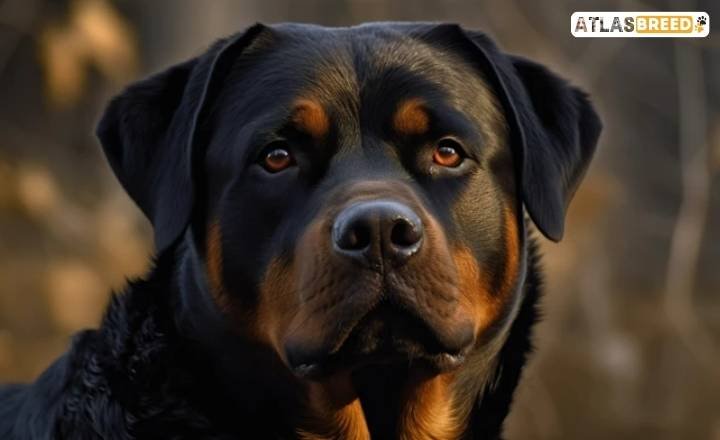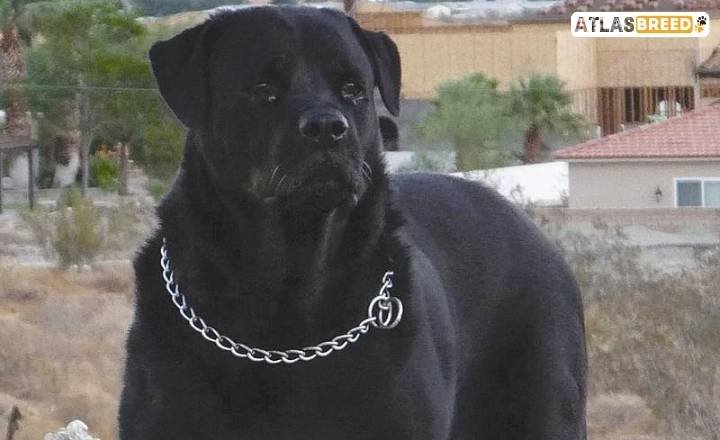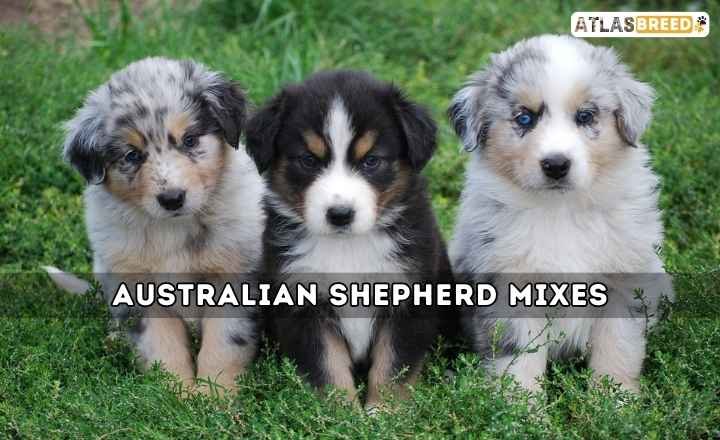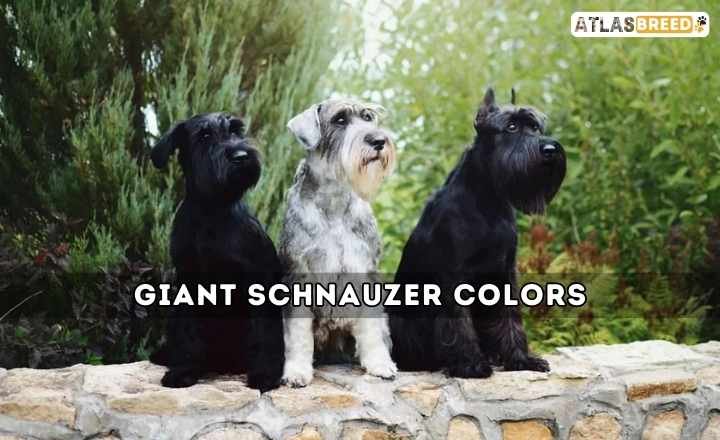The image Rottweilers likely springs to mind is one of a sturdy, powerful dog with a striking black and tan coat. But this beloved breed comes in a variety of colors that can surprise even the most devoted canine enthusiasts.
Their different color variations offer insight into their unique beauty and charm. Captivating the Rottweiler colors beyond the traditional palette, you’re considering welcoming one into your home or simply have an appreciation for these majestic animals.
Rottweiler Colors Overview
| Colors | Recognized | Standard |
| Black | NO | NO |
| Black and mahogany | YES | YES |
| Black and tan | YES | YES |
| Black and rust | YES | YES |
| Red | NO | NO |
| Blue | NO | NO |
| White | NO | NO |
Standard Coat Colors
The Rottweiler is a breed celebrated for its striking appearance. The unique colors might capture attention in dog shows or casual encounters, they often signal potential crossbreeding with other breeds that dilute the traditional characteristics.
Deviations from the accepted coat colors can also reflect underlying health issues related to genetics. For instance, rarer shades may indicate gene mutations that could influence more than just appearance.

They may affect temperament or resilience against certain health conditions. Recognizing this link encourages prospective Rottweiler owners to delve deeper into lineage and breed standards before welcoming a pet into their homes.
Rottweilers and Anatolian Shepherds both have a sturdy, muscular build and a strong, confident stance. Their heads are proportionate and they exhibit a loyal, protective nature. Both breeds also have a similar overall body shape and size.
Black And Mahogany Rottweiler
The striking black and mahogany coloring of the Rottweiler can lead to some amusing mix-ups, particularly with the Doberman Pinscher, a breed known for its similar markings.
Both breeds possess that classic combination of dark and warm hues, giving rise to an initial glance that might confuse even seasoned dog lovers. It’s essential to recognize that while their appearances may overlap in certain aspects, their temperaments and functionalities vary significantly.
Rottweilers display an innate drive and intelligence that shines in dog sports and obedience trials. Their thick set bodies provide the perfect balance between agility and stability, making them exceptional athletes on the field.
Black And Tan Rottweiler
This often characterized by its striking coloration, possesses a unique blend of power and elegance that captivates dog lovers worldwide. As natural guardians, they take pride in protecting their families, making them not only faithful companions but also reliable protectors.

This beautiful variation showcases a rich black coat adorned with vivid tan markings on the muzzle, legs, chest, and eyebrows, presenting an image that is both regal and intimidating. It highlights the versatile nature of Rottweilers in various roles throughout history from herding cattle to serving as police dogs.
The innate traits of courage and resilience are enhanced in these dogs when properly nurtured through training and socialization. Owners often find that engaging them in stimulating activities strengthens their bond while keeping mental health at peak levels.
Black And Rust Rottweiler
The rich contrast between the deep black coat and warm rust accents creates an eye-catching appearance that captivates dog lovers and passersby alike.
These rust markings serve more than just an aesthetic purpose; they highlight key features of the Rottweiler’s face, giving them expressive eyebrows that communicate a range of emotions from curiosity to affection.
The symmetrical placement of muzzle marks adds to their commanding presence while also showcasing their alertness and intelligence. These traits extend beyond visual appeal; they reflect a breed bred for resilience, companionship, and unwavering fidelity to their families.
Non-standard Coat Colors
Rottweilers, traditionally recognized for their striking black and tan coats, can surprise enthusiasts with an array of non-standard coat colors. These unique variations often include hues such as blue, chocolate, or even a rare fawn.
While these shades are not typical of the breed standard set by kennel clubs, they often spark interest among breeders and pet owners who appreciate the beauty of diversity in canine appearance.
Responsible breeders prioritize overall health over mere color preference. A chocolate Rottweiler may boast a warm allure but might also carry specific genetic predispositions that require careful attention.
Black Rottweiler
Traditional Rottweilers are known for their distinct tan markings on a black coat, a solid black variant can emerge when crossbred, often with a breed like the Black Labrador Retriever or Cane Corso.
This genetic interplay not only alters the dog’s aesthetic but also introduces varied traits that may appeal to different personalities looking for companionship. These crossbred pups exhibit a fascinating blend of temperaments.

The intelligence and versatility inherited from both lineages produce an agile guardian that is as loyal as it is protective. This combination makes them excellent family pets while still maintaining their instinctive roles as guardians and protectors within the household.
Red Rottweiler
The striking appearance of the red Rottweiler, characterized by its deep mahogany markings against a jet-black coat, has captivated dog enthusiasts since its surge in popularity during the late 19th century.
This color variation quickly became a symbol of both beauty and power, setting the stage for Rottweilers to transition from working dogs to beloved family companions.
The bold hues not only enhanced their imposing physical presence but also played a role in how these dogs were perceived socially and culturally evolving into icons of strength and loyalty.
The rise of red Rottweilers coincided with societal shifts that emphasized aesthetics alongside functionality. People’s attraction gravitated toward breeds that could embody both protection and an appealing visual charm.
Most kennel clubs worldwide do not officially recognize this color variation because it strays from the traditional breed standard. This rejection often stems from concerns about potential health issues and genetic anomalies that could arise from breeding for specific colors rather than temperament and conformation.
Blue Rottweiler
The Blue Rottweiler is more than just a striking variation of the traditional breed. It’s a discussion point for both admirers and skeptics alike. This rare color often sparks debates on genetics and breed standards.

Some enthusiasts are drawn to their distinctive appearance, it’s essential to note that blue coats occur due to a dilution gene that can also influence health. Potential owners should be aware of issues like increased susceptibility to certain skin conditions and other genetic factors.
White Rottweiler
This strikingly beautiful dog may capture attention with its pale fur, yet it’s essential to delve deeper into the characteristics that define them. Unlike their commonly recognized black and tan counterparts, White Rottweiler color stem from genetic mutations or breeding practices that lighten their fur.
These dogs share the robust temperament and loyalty inherent to all Rottweilers. They are known for their intelligence and protective nature, making them excellent companions for families and individuals alike.
Emphasizing socialization from an early age can help mitigate any potential issues stemming from overprotection or shyness in unfamiliar environments.
Coat Types
The most common coat type is the short, long fur that hugs the body, enhancing its muscular build. This smooth coat requires minimal grooming and reflects light beautifully, resulting in a glossy appearance that often turns heads on walks or at dog parks.
Short-haired Rottweiler
Short-haired Rottweilers are a remarkable representation of strength and resilience, characterized by their large average size and muscular bodies. Unlike long-haired breeds, their sleek coats accentuate defined muscles, enabling them to exhibit agility alongside power.
This unique short coat not only enhances their athletic appearance but also makes maintenance a breeze for busy owners. Less shedding means more quality time with your canine companion.
Their strong tails serve as a dynamic extension of their impressive physique, often conveying emotion and communication in ways we might overlook. When these majestic dogs wag their tails excitedly or use them to balance during play, it’s clear that their anatomy is perfectly designed for both movement and expression.
Long-haired Rottweiler
It is often seen as a rarity among the breed, possessing a coat that captivates both dog lovers and potential owners. These fluffy beauties exhibit an undercoat that grants them an impressive warmth and softness.
This unique coat structure not only requires more grooming attention but also opens up a conversation about misconceptions in the breed’s adaptability to various climates. While traditional views paint Rottweilers as rugged dogs meant for toughness, the long-haired variety delights in flipping that narrative showing off elegance alongside brawn.
What Is The Rare Rottweiler Colors?
The rarest variation within this powerful breed is the blue Rottweiler. This unique hue arises from a genetic mutation that disrupts the standard black pigment, producing an eye-catching blue-gray color.
These dogs may be visually stunning, potential owners should note that such rare coloration can sometimes signal health issues linked to genetic diversity.
The fascination with blue Rottweilers often leads to mixed opinions among breeders and enthusiasts alike. Breeding specifically for traits like color can inadvertently compromise overall health and temperament.
While a blue Rottweiler might turn heads at the dog park, prospective owners must prioritize responsible breeding practices over aesthetic appeal to ensure they’re bringing home a well-rounded companion.
Conclusion
The diverse palette of Rottweiler colors adds to the breed’s captivating charm and individuality. From the classic black and tan to more unique variations such as blue and merle, each color brings its own distinct character to these loyal companions.
Each hue can enhance your appreciation for this remarkable breed, whether you are a seasoned owner or considering welcoming a Rottweiler into your home.
FAQ’s
Does Color Really Matter?
Color plays a significant role in our lives, influencing emotions, perceptions, and even behaviors.
What is unique about Rottweilers?
Rottweilers are unique for several reasons, primarily their remarkable blend of strength, intelligence, and loyalty.
What are Rottweilers named after?
Rottweilers are named after the town of Rottweil in Germany, where the breed was originally developed. The name Rottweiler translates to Rottweil’s dog, reflecting their origins as herding and guarding dogs for cattle and property in the region.
How long do Rottweilers grow?
Rottweilers typically reach their full height by around 12 to 18 months of age, but they may continue to fill out and gain muscle mass until they are about 2 to 3 years old. Males generally stand between 24 to 27 inches at the shoulder, while females are slightly smaller, ranging from 22 to 25 inches. Their weight can vary significantly, with males usually weighing between 95 to 135 pounds and females ranging from 80 to 100 pounds.






